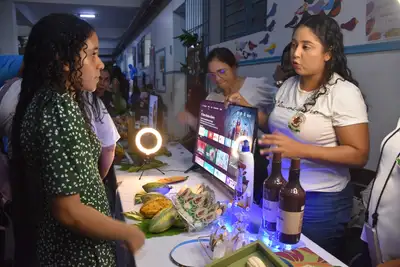Geographical Indications strengthen productive chains and boost sustainable development in Pará
Uepa's panel at COP30 highlights legal protection, bioeconomy, and the strategic role of collective brands to enhance the competitiveness of products from Pará
With the panel "Geographical Indications and collective brands in the State of Pará: legal protection, bioeconomy, and territorial development", the State University of Pará (Uepa) participated, this Friday (20), in the programming of the Pará Pavilion, in the Green Zone, during the United Nations Conference on Climate Change 2025 (COP30), whose official programming ends today.
The moment presented the results of the research group Laboratory of Analysis and Strategic Territorial Research of the Amazon (Lapet), focusing on the study and consolidation of Geographical Indications (GIs) and collective brands as instruments for valuing territories and strengthening the bioeconomy.
According to Professor Valente, the recognition of the origin of products is essential to ensure competitiveness and cultural preservation.
"These instruments are recognized worldwide, and all countries are racing to protect their products. We, from Pará, also need to protect especially those with great scaling potential, such as açaí, cocoa, and black pepper," he emphasizes.
He further emphasizes that public policies play a decisive role in increasing the presence of GIs in the State.
"The important thing is that the government, through public policies — such as the newly created state program for geographical indication — fosters not only the already consolidated GIs and brands but also encourages the creation of new ones. They are instruments for protecting these products and, above all, for territorial development," explains Valente.
The professor reinforces that the topic directly relates to the agendas of COP30.
"A large part of these products comes from family farming and is anchored in sustainability principles. Pará has a great opportunity to promote the sustainable development of its productive brands," he concludes.
Thus, Geographical Indications show strategic paths to boost local economies and strengthen Pará's role in the global bioeconomy agenda.



















